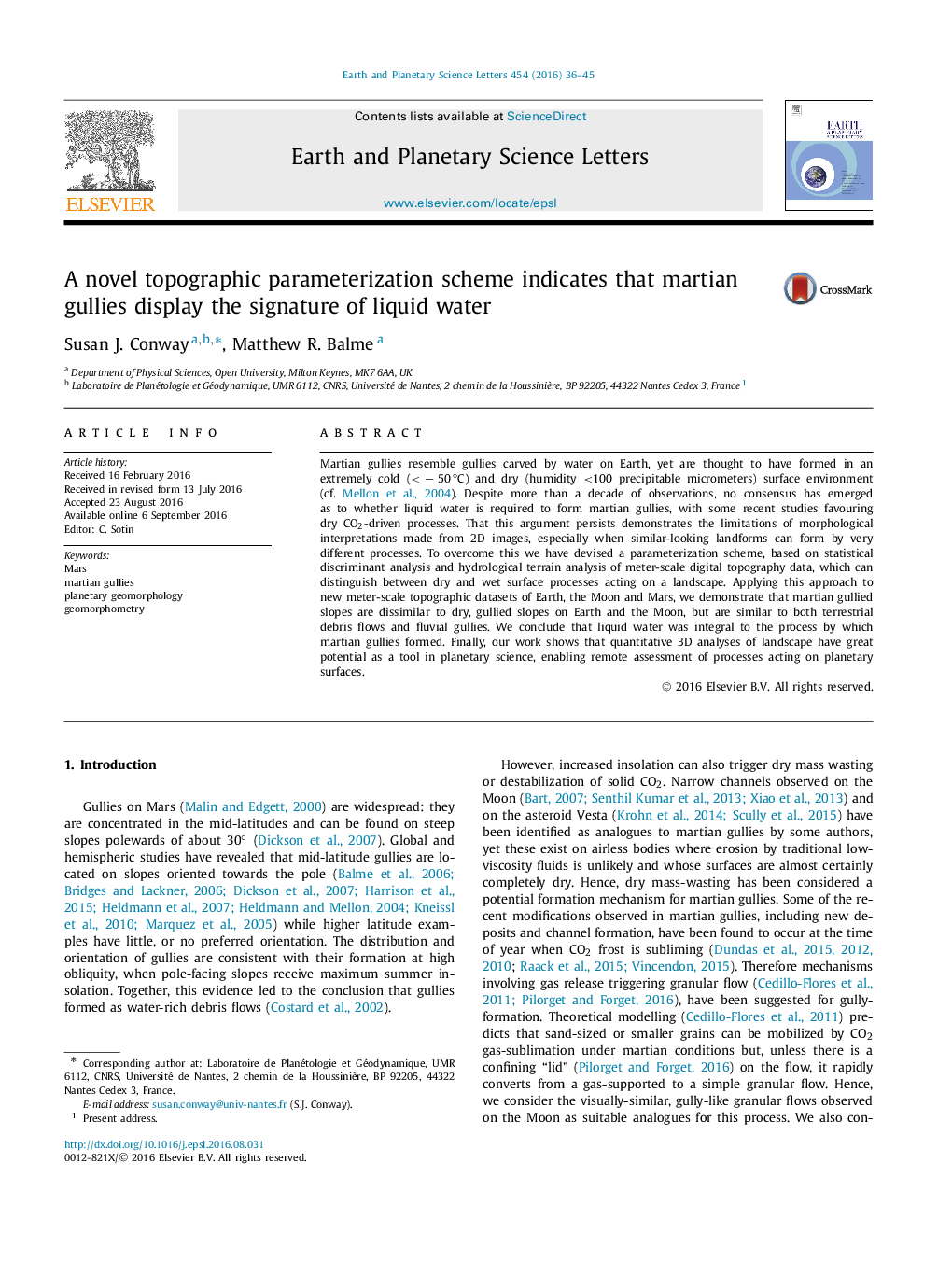| Article ID | Journal | Published Year | Pages | File Type |
|---|---|---|---|---|
| 6427180 | Earth and Planetary Science Letters | 2016 | 10 Pages |
â¢We present new terrain analyses from high-resolution DEMs of martian gullies.â¢We find that liquid water was involved in the formation of martian gullies.â¢Dry processes do not explain gullies topographic signatures.â¢Process-level interpretation from 2D images can be unreliable.â¢Statistical analysis of 3D data provides a better way to determine process.
Martian gullies resemble gullies carved by water on Earth, yet are thought to have formed in an extremely cold (<â50°C) and dry (humidity <100 precipitable micrometers) surface environment (cf. Mellon et al., 2004). Despite more than a decade of observations, no consensus has emerged as to whether liquid water is required to form martian gullies, with some recent studies favouring dry CO2-driven processes. That this argument persists demonstrates the limitations of morphological interpretations made from 2D images, especially when similar-looking landforms can form by very different processes. To overcome this we have devised a parameterization scheme, based on statistical discriminant analysis and hydrological terrain analysis of meter-scale digital topography data, which can distinguish between dry and wet surface processes acting on a landscape. Applying this approach to new meter-scale topographic datasets of Earth, the Moon and Mars, we demonstrate that martian gullied slopes are dissimilar to dry, gullied slopes on Earth and the Moon, but are similar to both terrestrial debris flows and fluvial gullies. We conclude that liquid water was integral to the process by which martian gullies formed. Finally, our work shows that quantitative 3D analyses of landscape have great potential as a tool in planetary science, enabling remote assessment of processes acting on planetary surfaces.
